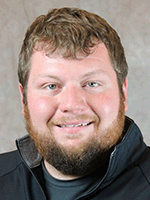
Managing the first lactation (part 2): Litter size and lactation length
 Editor’s note: This is the second article in a two-part series about managing the first lactation. In part 1, we discussed various first-parity feeding strategies.
Editor’s note: This is the second article in a two-part series about managing the first lactation. In part 1, we discussed various first-parity feeding strategies.
By Dave Chamberlin
Replacement gilts are a huge investment required of every farm, and anything that increases the sow longevity/average parity of a farm reduces costs and improves overall return.
Maximize P1 litter size
It has been suggested that cross-fostering piglets from multiparous sows onto P1 sows to maximize the number of teats used may improve long-term reproductive performance (Farmer et al., 2012). Cross-fostering piglets onto P1 sows within 24 hours after farrowing may increase mammary tissue growth and milk production, both in the first and following lactations (Trottier, 2015).
One study found that individual teat development and milk yield in the subsequent litter is dependent on how often it is suckled during the first parity (Farmer et al., 2012). Individual teats that are not suckled in the first parity are less likely to properly function and contribute to total milk yield in all subsequent lactations. The study was designed to mimic a setting in which half of the sows had full P1 litters while the other half had enough pigs to utilize half of their available teats (the other half were covered with tape to prevent suckling). By preventing half of the sows’ teats from being suckled in the first lactation, these researchers demonstrated how milk production from unsuckled teats is significantly decreased during the next lactation.
Second-parity pigs originating from sows whose teats were all used during the first parity (full litter) were significantly heavier and had greater growth rate than pigs from sows who had only half of their teats utilized during their first parity (half litter). Cross-fostering to fully utilize all functional teats of P1 sows improves lifetime milk production and functional mammary tissue to improve sow longevity.
Lactation length
The U.S. swine industry has studied – and frequently altered – the recommended lactation length throughout the years. Recent research provides some insight about how increasing lactation length from 21 to 28 days may have some long-term benefits on piglet gut health and integrity (Moeser et al., 2017). It has been reported that weaning as early as 10 days of age decreases pathogen transmission from sow to piglet, but also leads to greater difficulties transitioning to a grain-based diet in the nursery and stunted piglet growth performance (Lindemann et al., 1986; Smith et al., 2007).
While increasing lactation length decreases the number of litters per sow per year, this practice may actually benefit sows in the subsequent lactation. Research has indicated a linear increase in total born pigs in the subsequent litter with each additional day of lactation (increasing from 15 to 25 days; Xue et al., 1993; Costa et al., 2004). Lactation length has a great impact on subsequent reproductive performance, even more so in P1 sows as they are still growing during the first gestation and can benefit from even a slight increase in lactation length. While there is no perfect target number for days of lactation, various research appears to indicate a minimum of 18 days is required to optimize both sow and piglet performance.
Contact your Vita Plus nutritionist to discuss these and other management strategies to help you reach your production and profitability goals.
About the author: Dave Chamberlin attended Michigan State University and received a bachelor’s degree in animal science and a master’s degree in monogastric nutrition in 2017. He has experience working on a 5,000-sow farrow-to-finish farm, overseeing all farrowing management, as well as on a 700-sow farrow-to-finish unit as a farrowing manager. Chamberlin also previously worked in swine nutrition formulating rations, coordinating ingredient orders, overseeing farrowing farm management and production, and performing farm trials related to nutrition, breeding, and management. Chamberlin joined Vita Plus as a swine technical sales manager in May 2018.
| Category: |
Animal health Swine Performance |

